Winterizing Plumerias

This article was written with Arizona and other Southwest areas in mind, but much of the information applies to everyone.
If your Plumerias seem to be getting yellow leaves, and you are starting to see leaves wither and fall off, don’t fret . . . your Plumerias are going dormant. This is a good thing because they will go to sleep for the winter and awaken in Spring with renewed strength, leaves, and blooms.
What we don’t want to happen is for our Plumerias to freeze and die! Here’s some info to help prevent freezing and ultimately losing your precious plants.
Since Plumerias are very sensitive to frost, they should be moved into a garage or storage shed when the temperature goes below 40 degrees F. They can be stored in their pots or bare rooted. They do not need light while dormant.
If this is not possible to store your Plumerias, you can keep them close to the house and keep them as warm as possible by lighting them and aiming the light at the trunk of the plant or stringing Christmas lights on them. You may also want to cover your Plumerias with a blanket, sheets, or frost cloth (something breathable – not plastic). The trapped air will stay warmer and protect the plant.
Remember to remove the blanket during the day if it gets over 40 degrees F. You can leave the frost cloth on day and night. It is made for this purpose. Blankets and sheets do need to be removed during daylight hours.
A small heater, that can be used as well, but do make sure it is electrically sound and not close to anything combustible. You can also use tube socks and foam pipe insulation to protect trucks and branches. Try to maintain an air temperature around your Plumerias above 40 degrees F at night.
Don’t be too upset if you lose a few Plumerias over the winter if they are covered outside or stored outside. Varieties vary to cold tolerance. One may survive 32 degrees, while another may not.
You may also bring your Plumerias inside. If your home is around 65 – 70 degrees F, they may not go dormant. They may keep their leaves. Water them sparingly and watch for spider mites. Air circulation is needed to avoid spider mites. Over head fans work great. Turn it on for a couple hours each day. Cuttings and seedlings should stay inside during the winter. Seedlings can sit in a well lighted window. Again, watch for too much sun and stagnant air to avoid spider mites.
As winter approaches, stop feeding fertilizer with high nitrogen because you do not want your plumerias to start growing at this time. You can give them some potassium, as well as, give them a dose (1 tablespoon per gallon of water) of Epsom Salts.
Another tip in keeping them warm is to mulch up around the trunks with a course mulch only especially in Arizona. This will keep them warmer during colder night time temps. Do not use a fine mulch as it will hold moisture and might rot your trees as it is our rainy season and temps are still warm during the day.
Too much water is the killer of Plumerias in winter. Once you see that your Plumerias are going dormant by dropping leaves and seeing no new growth, you may stop watering. If you can’t help yourself and feel the need to water, give your plants 1/2 cup water per month. That should be fine for your Plumerias and your state of mind. 😉
Since our winters in Arizona are not harsh, most Plumerias can be kept outdoors under house eves or against the house on a patio or porch with some lighting or cover. Southern and Western exposures work well. Avoid the north sides of houses as these areas are the coldest. If temps stay below 32 at night for several days, you may have to take more drastic measures. Frosts in Arizona have occurred before Thanksgiving but the most damaging frosts come in February – just when you think you’re safe so watch your thermometer.
During dormancy, your once lush plant will look like a barren stick. Not to worry. Once warm weather comes again, new leaves will start to sprout and inflos will appear.
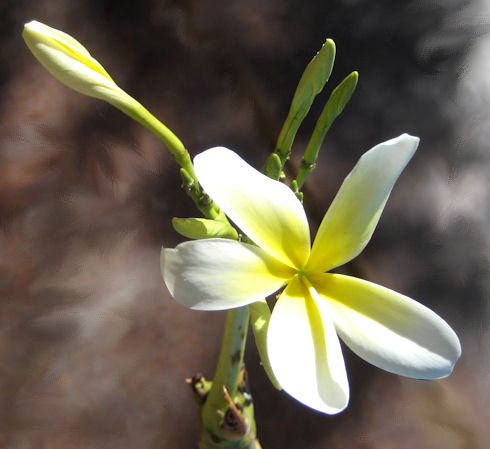
Happy growing … Michele 🙂
© 2003-Valley Of The Sun Plumeria Society
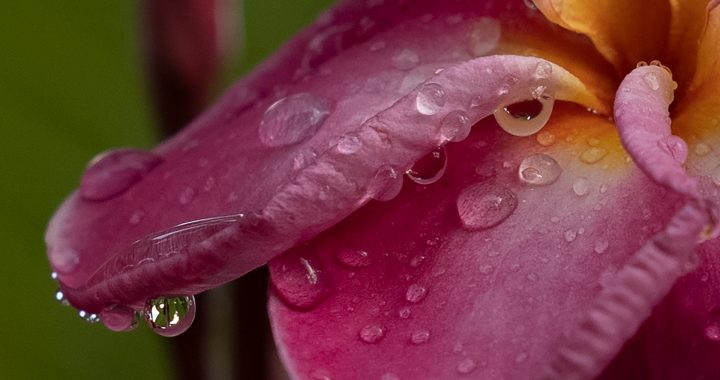 Caring for your Plumeria 101
Caring for your Plumeria 101 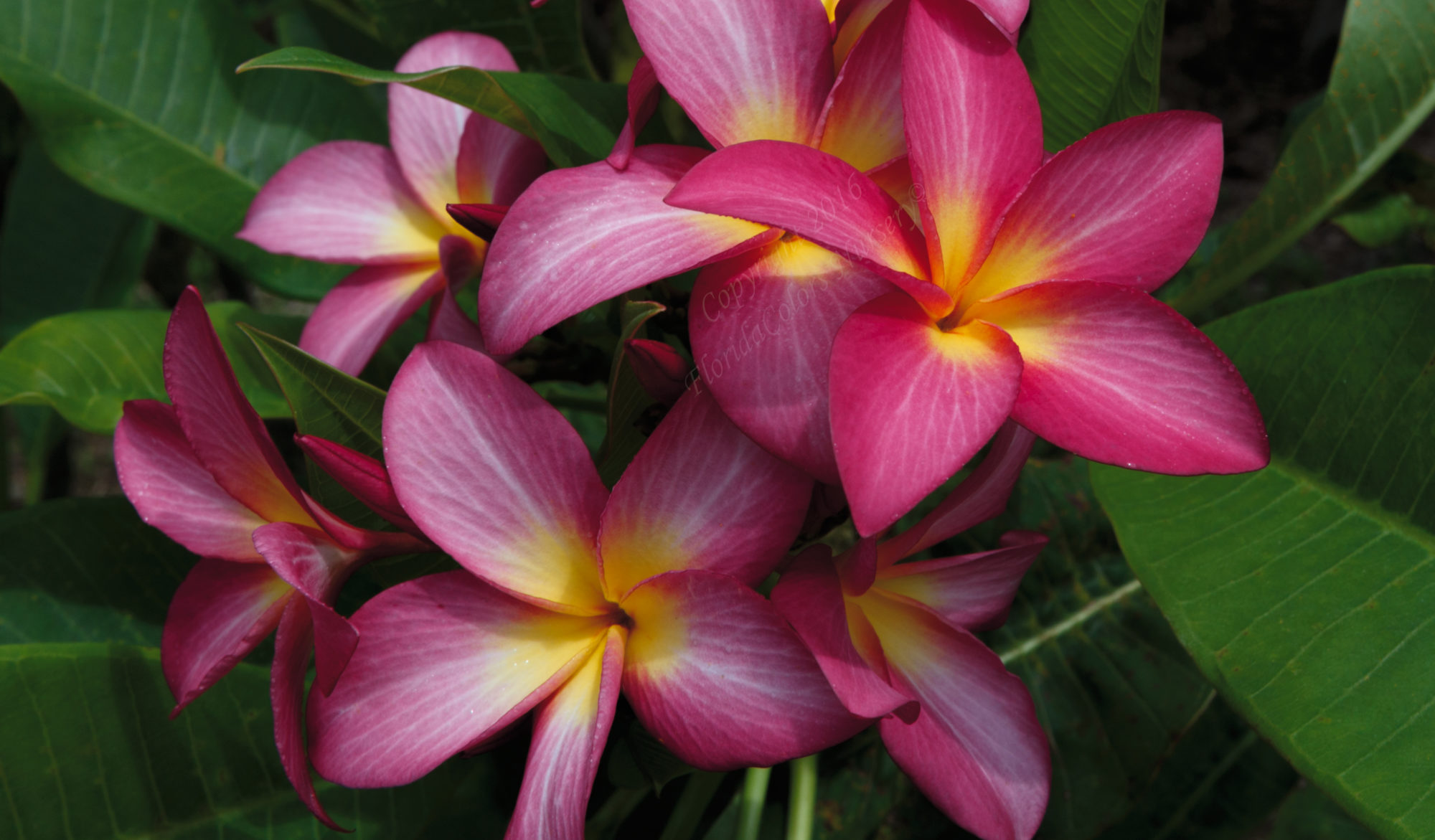 Understanding Plumeria’s Seasonal Cycles
Understanding Plumeria’s Seasonal Cycles 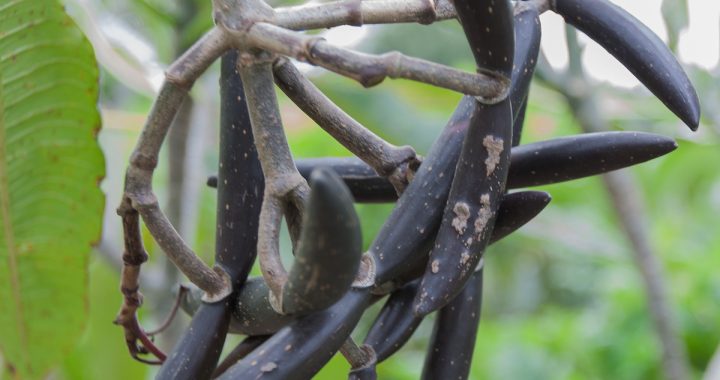 Why are Plumeria Seedlings so Different?
Why are Plumeria Seedlings so Different? 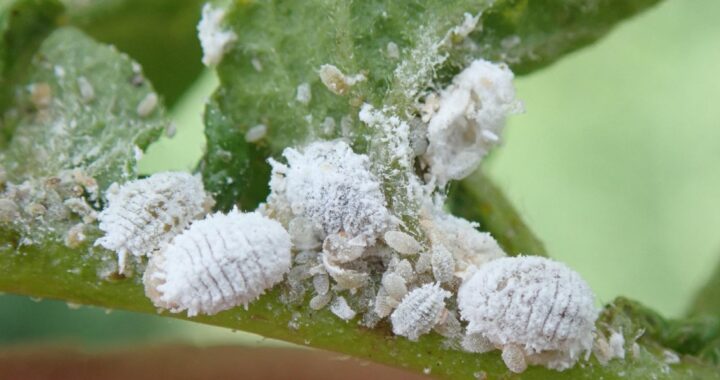 Mealy Bugs Plumeria Pests
Mealy Bugs Plumeria Pests 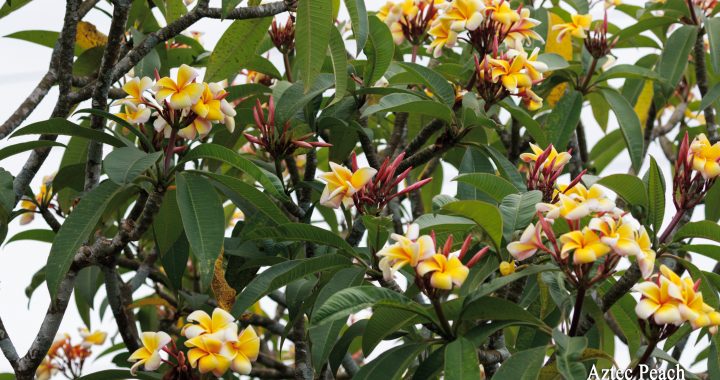 Known Plumeria Names
Known Plumeria Names